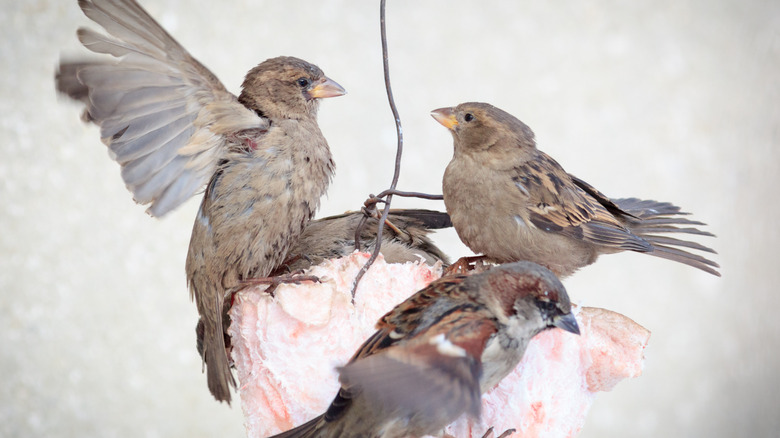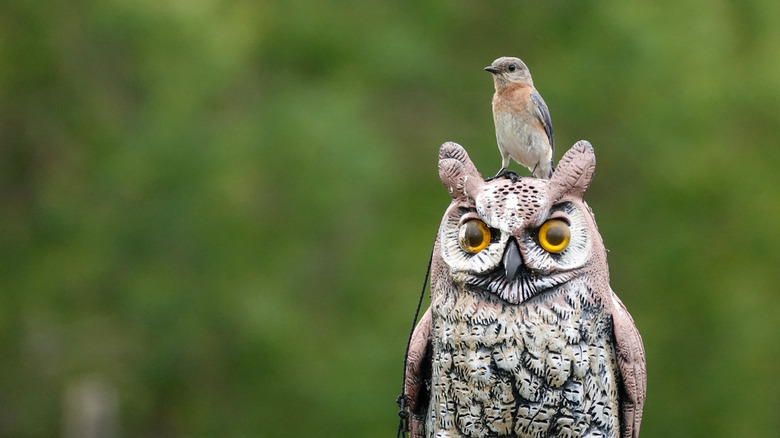How To Keep Invasive Sparrows Out Of Your Birdhouses And Nesting Boxes
Though house sparrows (Passer domesticus) look a bit like native North American species such as chipping sparrows (Spizella passerina), they aren't closely related. These invasive and aggressive birds can spell trouble in your yard, where they might evict Eastern bluebirds from their nesting boxes and kill them in vicious attacks. These noisy invaders also create messes, spread disease, and deter native birds that benefit your garden. In other words, you don't want these birds near your feeders and you definitely don't want them in your birdhouses. Careful placement of birdhouses and other nesting boxes can prevent house sparrows from colonizing your yard and even damaging your home.
In general, put birdhouses and nesting boxes at least 300 feet from your house. Any closer and house sparrows take it as an invitation to move in. Unlike most birds, they aren't easily spooked by people, so they're willing to live closer to them. What's worse, they'll use your birdhouse as a year-round command center and may dive-bomb people who get too close, even if they're just trying to ring the doorbell.
Choosing birdhouses tailored to your desired species can also help keep house sparrows away, along with sealing entrance holes until these types of birds migrate to your area. To encourage neighborly feathered friends to raise their young in your yard, make sure nesting boxes aren't too close to areas other birds congregate. Install birdhouses at least 15 feet from feeders and birdbaths, and research how far apart nesting boxes should be for your favorite species. Owls tend to require lots of space between their homes, while Carolina chickadees need only 30 feet.
Booting existing house sparrows from your birdhouses
If house sparrows have commandeered your birdhouses or started bullying peaceful birds trying to nest there, you'll need to convince them to leave. Fear can be a powerful motivator. There are several clever tools that can persuade invasive sparrows that your nesting boxes are scarier than a haunted clown mansion. For instance, sparrow spookers can send them packing without bothering bluebird moms. If you try one of these, affix it to the top of the nesting box after a bluebird resident has laid an egg and remove it once the feathered family is done with the nest.
Another option is installing fake predators near nesting boxes house sparrows have invaded. Hawk decoys such as the Bird-B-Gone plastic hawk decoy are made for this purpose. Or try a 3-pack of horned owl statues designed to terrify invasive sparrows, pigeons, seagulls, and squirrels. Make the most of these products by learning to identify sneaky signs of pest problems in your yard and taking action as soon as possible. Just be sure to avoid faux predators that might frighten away the creatures you want in your yard.

